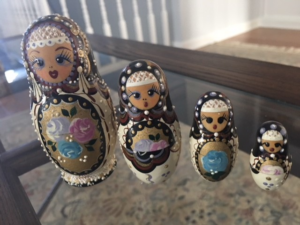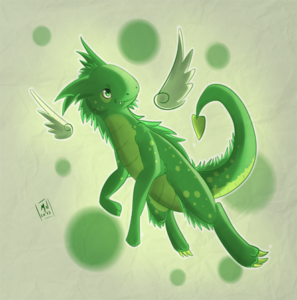
This book has no age limit! Categorized as a YA novel, the universal themes presented in this magical tale will resonate with all readers. When I describe this tale to teachers and parents, I compare its organizational structure to Russian stacking dolls. That is, there are separate story lines within the book that are woven together like a beautiful tapestry. The Girl Who Drank the Moon is a complex text, with multiple story lines and character perspectives, multiple levels of meaning, different text structures, deep themes, implied meanings, figurative language – lots of “connecting the dots.” Therefore, it is a challenging read but worthwhile.

The story is told from multiple viewpoints. The setting see-saws between the Protectorate and the woods. Every year, the people of the Protectorate select a newborn baby to leave in the forest to appease the fearsome witch that lives there. They believe that their very existence depends upon this sacrifice. No one in the Protectorate actually knows why they must conduct this ceremony, or challenges its continuance. They have never even seen the witch, and the Elders dictate the laws.
This quote, that appears at the beginning of the book, helps to understand their communal mindset – “Sacrifice one or sacrifice all. That is the way of the world. We couldn’t change it if we tried. Enough questions – off with you child.”
Unknown to the people of the Protectorate, the witch is hardly fearsome. In fact, she has been rescuing the babies every year, and delivering them to loving families in the Free Cities. She is puzzled as to why anyone would abandon a baby, but makes sure they are safe with warm “bottles of starlight” to nurture them on their trip to their new homes. That is, until she find Luna, the girl with the crescent moon birthmark. She wants to bring Luna to the Free City, but she grows to love her. More importantly, she has let Luna drink moonlight instead of starlight. In doing so, she has “enmajicked” her, and must accept responsibility for her proper upbringing as a magical being.
The Girl Who Drank the Moon is rich in symbols and characterization that can lead to wonderful “book talks.” The themes of hope and hopelessness remind me of The Hunger Games and The Giver – or, societies that have collective amnesia for another way of living – and do not value life. The theme of forgetfulness and remembrance also run through the narrative, as characters begin to rediscover themselves, their beliefs, and reimagine their society. Luna is a courageous protagonist, and the cast of characters in her world will delight readers. I particularly liked Fyrian. the miniature dragon who views himself as colossal. The last words his mother says to him, “You will know your purpose. You are, and will be, a giant upon this fair earth. Never forget it,” becomes relevant later in the story. There is such wonderful character development in the book.

I can envision book talks about the conditions that allow evil to exert its presence in a society, and why people might adapt a passive stance. I would also highlight the concrete images the author uses to represent a world lost in hopelessness and sorrow. The fog, dark clouds, and bog are ripe for discussion, as is the sunlight. These analogies reveal the transformation that occurs in the lives of the Protectorate’s people, and in the minds of the young readers who have a chance to experience this book!
Happy reading!
Joanne
